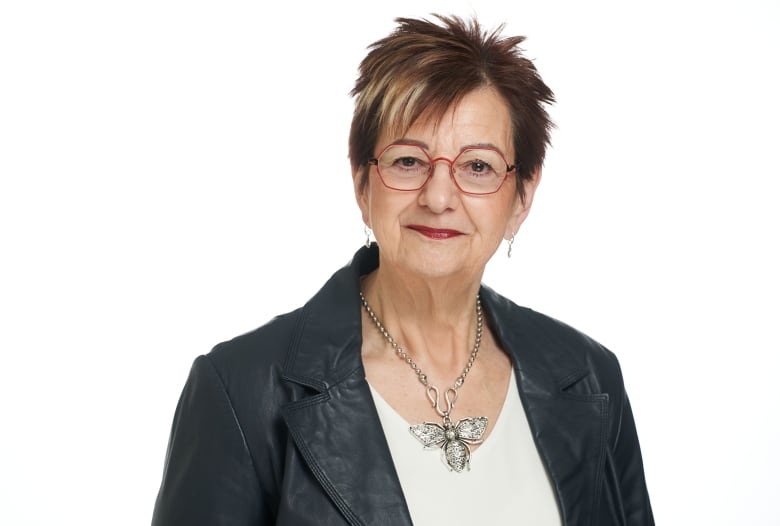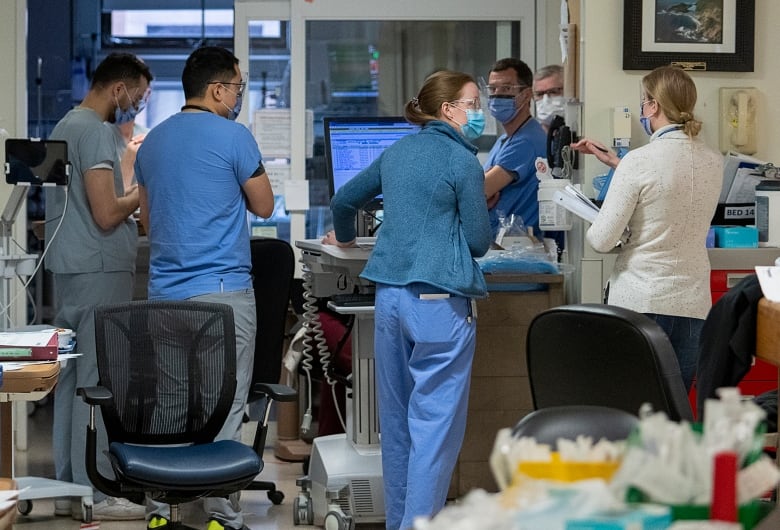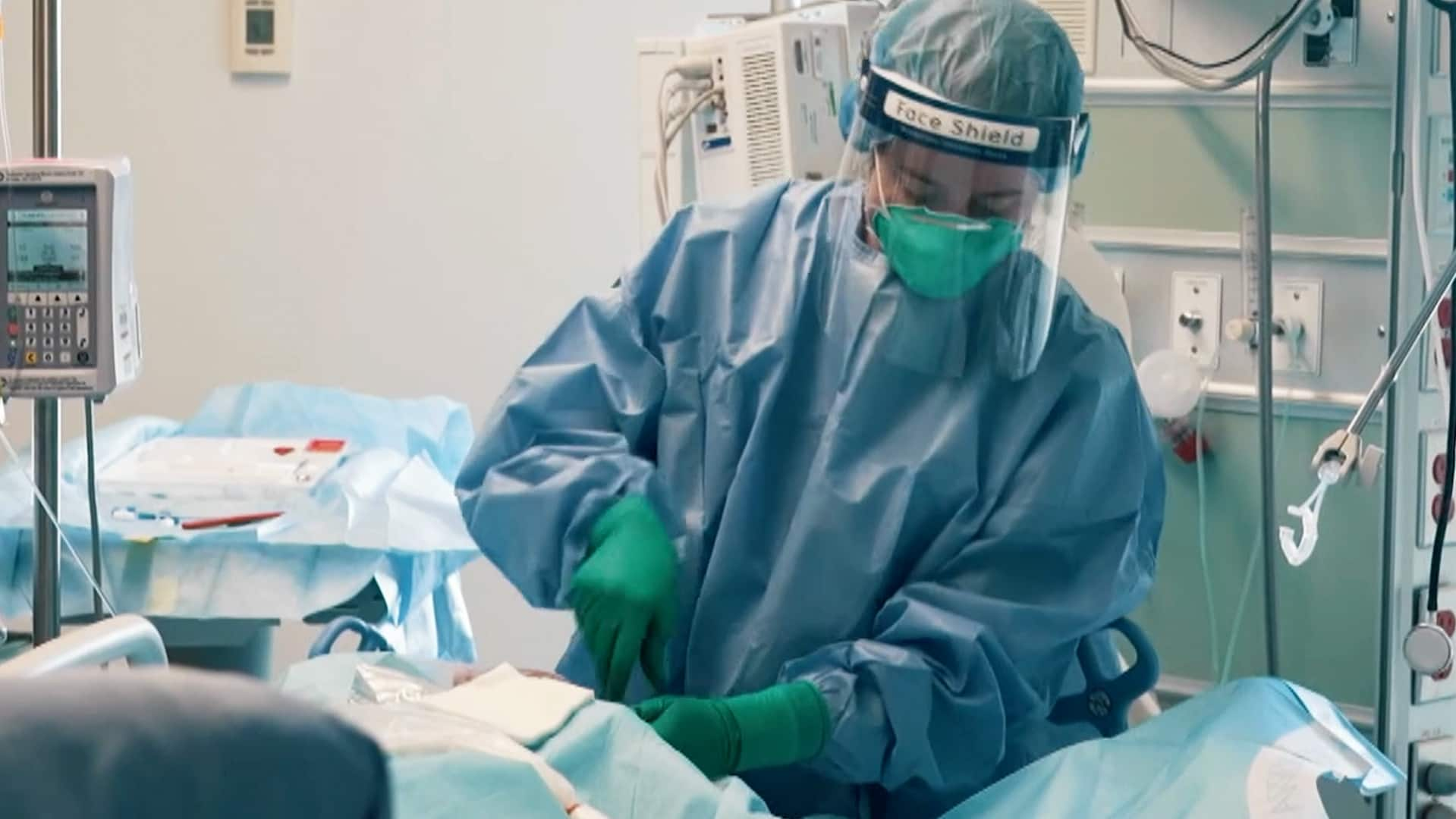White Coat Black Art26:29Nursing as occupational hazard
A Manitoba nurse who took a man to court following an alleged assault about a year ago at the hospital where she works says she has no regrets about pursuing legal recourse, even though the charges were stayed last week.
“My narrative is it does not matter what the outcome of this was, because this incident actually happened to me; I got severely hurt…. So it doesn’t change anything,” said Jennifer Noone, who is on leave while she recovers from a concussion and other injuries.
“And I’m going to advocate for safety in hospitals and everywhere else I can for health-care workers.”
Just two days after the decision, a patient at Winnipeg’s Health Sciences Centre (HSC) was charged after a security guard was stabbed. Noone and other advocates say there’s a pattern of escalating violence against nurses and other health-care workers that must be addressed.
CBC News is not naming the hospital where Noone works because she said she risks losing her job if she speaks publicly.
She told White Coat, Black Art host Dr. Brian Goldman that she was approaching the door at an employee-only entrance to the hospital on March 27, 2023, when the alleged assault occurred.

“I felt a pull right behind me, like something had pulled my backpack. I did get smashed into the door frame, the wall. Everything just happened so fast,” Noone said. “And when I was pulled back, I noticed there was just a very, very tall man. I’m not too sure what his intent was, but, thankfully, I was able to fight him off a bit.”
A moment later, it was over and Noone was safe inside a locked door.
She said she immediately called security and a short time later was able to identify the accused to police while both were being seen in the hospital’s emergency department.
Noone said she was left with abrasions, a shoulder strain and a concussion.
Frustration over wait times boiling over
Darlene Jackson, president of the Manitoba Nurses Union, which represents 12,000 nurses, said violence in the health-care system is the highest she’s ever seen.
“COVID really started it with people being really frustrated, and wait times don’t help because if you’re sitting with a family member in a busy emergency department for 15 hours, you tend to get a little frustrated and short,” she said.
“And because nurses are right front and centre, they’re very often the very people who get the brunt of that.”

It’s difficult to quantify the number of assaults, Jackson said, because of changes in the way they’re being reported.
“In the past, every time a nurse in this province had some type of abuse or violence situation, we would get a report. And it was very clear where it happened, who the nurse was, what the violent act was,” she said.
A union rep would then follow up with that nurse to ensure they received psychological help and other medical care and that they had filled out workers’ compensation forms, so plans could be used to prevent similar incidents at that facility, Jackson said.
But since amendments to Manitoba’s Personal Health Information Act came into effect in 2022, employers have been opting to anonymize those reports, she said, meaning the union can’t take action unless a member specifically chooses to let it know. “What we’re finding is that nurses aren’t really reporting this as much as they should because they know it’s not going to go anywhere.”
That’s what makes Jennifer Noone’s case so remarkable, Jackson said.
“I feel like she’s almost doing this on her own, because we’ve had no input, no way to support these nurses. So I am super proud of her for that.”

Increased security measures implemented
A spokesperson for Shared Health, the operational arm of Manitoba’s Ministry of Health, told CBC News in a written statement that it’s taken steps to increase safety, including reducing the number of hospital entrances, placing security guards at or near doors, increasing foot patrols of parkades, and installing more lighting and video surveillance.
The spokesperson also said that Shared Health expects to hire and train the first group of 40 institutional safety officers (ISOs), who will have expanded powers over current security guards for HSC and other Manitoba hospitals in the near future.
Linda Silas, president of the Canadian Federation of Nurses Unions, said the problem isn’t contained to Manitoba alone, nor is it new. However, she said, attitudes toward the violence are changing.
“I still say I remember my first campaign on zero tolerance to violence in health care in 1991,” she said. “And in 1991, and true, probably [for] the next 20 years, it was taboo to think of charging a patient.”

Silas said she can remember standing on the floor of the Canadian Labour Congress and saying that nurses needed to lobby for changes to the Criminal Code that would allow patients to be charged.
“Everyone’s ‘Oh, you can’t charge a patient…. They were either in pain or [on] medication or [have] mental issues or whatever. It’s not their fault.’ But it is not the nurse’s responsibility to decide if it is their fault.”
Nurses won that effort just over two years ago with Bill C-3, which created a new intimidation offence for conduct intended to provoke a state of fear in a health professional, impeding the performance of their duties. The bill also made it an aggravating factor in sentencing if the victim of a crime is a health professional.
“If you intimidate or harass or, of course, physically injure a health-care worker, you will be criminally charged at the same level as a police officer,” Silas said.

Silas said the first successful criminal case involving violence against a nurse was that of Randy Van Horlick, who was convicted in 2020 of assault against Moncton nurse manager Natasha Poirier and her colleague, nurse Teresa Thibeault.
Poirier also brought a civil suit against Van Horlick, who was ordered to pay $1.3 million.
‘Our violence is through the roof’
Back in Winnipeg, staff at HSC, where a security guard was stabbed, say violence there has become the norm.
A health-care worker who spoke on condition of confidentiality for fear of job repercussions told CBC News there were 40 to 50 patients in the emergency room waiting to be seen as the incident unfolded.
“Our violence is through the roof. It happens daily, whether it’s verbal abuse, … physical abuse of staff or it’s threats of violence,” the staff member said.

Asked what goes through their mind when they hear about this and cases like Jennifer Noone’s and the stabbing at HSC, Manitoba Health Minister Uzoma Asagwara said it’s “so disheartening.”
“Health-care workers deserve to be safe at their places of employment, and I take very seriously concerns and reports of violent incidents or incidents that happen that make health-care workers feel unsafe,” said Asagwara, a former psychiatric nurse who has been in the ministerial position since Wab Kinew’s New Democrats formed the government last October.
“Some of the challenges that we’re seeing, including around safety, are related to the sort of pressure-cooker situation that we see happening. You have folks who are waiting a long time or are scared about their health, maybe uncertain about when they’re going to be seen, and you’ve got staff who are doing their absolute best to provide care but are working in conditions that the previous government did not take meaningful steps to address.”
This week the province approved $710 million in emergency funding to address staffing issues in the health-care system.
Staffing shortages and a surge in respiratory illnesses are putting pressure on Canada’s emergency rooms, and experts are urging people to update their vaccinations.
Produced by Colleen Ross. With files from Bryce Hoye




